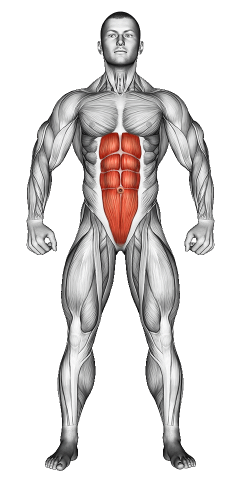Leg Flutter Kicks: Video Tutorial & Exercise Guide

Written By: Claude Michael
Updated: Oct 13, 2024
| Workout | Leg Flutter Kicks |
| Primary Muscle Group | Abs |
| Secondary Muscle Group | Obliques |
| Equipment Required | Bodyweight |
| Force Type | N/A |
| Mechanics | Compound |
| Exercise Type | Strength |
| Difficulty | Beginner |
Leg Flutter Kicks: Video Tutorial & Exercise Guide
- 1.Leg Flutter Kicks: Muscle Groups
- -1.1Primary Muscle Group
- -1.2Secondary Muscle Group
- 2.Leg Flutter Kicks: Step-by-Step Guide
- 3.Leg Flutter Kicks: Overview
- 4.Leg Flutter Kicks: Benefits
- 5.Leg Flutter Kicks: Pro Tips & Advanced Techniques
- 6.Leg Flutter Kicks: Progression Plan
- 7.Leg Flutter Kicks: Frequently Asked Questions (FAQs)
Secondary Muscles Group
Leg Flutter Kicks: Step-by-Step Guide
- Step 1: Lie flat on your back with your legs extended and your arms by your sides, palms facing down. Press your lower back into the floor.
- Step 2: Lift both of your legs off the floor a few inches, keeping them straight and slightly apart. Engage your core to stabilize your body.
- Step 3: Begin to flutter your legs up and down in a controlled, alternating motion. One leg should rise while the other lowers, keeping the movement smooth.
- Step 4: Maintain tension in your core and avoid arching your back as you flutter your legs. Keep your lower back pressed firmly into the floor.
- Step 5: Continue for the desired duration or number of reps, then slowly lower your legs back to the floor and rest.
Leg Flutter Kicks: Overview
Leg flutter kicks are a simple yet effective exercise that targets the lower abdominal muscles and hip flexors. By performing a controlled fluttering motion with your legs, you can build strength and endurance in your core.
This exercise is commonly used in core workouts and can easily be incorporated into routines for beginners and advanced athletes alike. Flutter kicks help improve stability, strengthen the lower abs, and enhance overall core control.
Leg Flutter Kicks: Benefits
Leg flutter kicks are highly effective at strengthening the lower abs and hip flexors. They engage your core muscles to maintain stability and balance, helping improve posture and endurance. Flutter kicks can also boost coordination and leg control while contributing to a stronger core.
Additionally, flutter kicks are a low-impact exercise, making them suitable for people with joint concerns or those looking for a challenging core exercise without heavy equipment.
Leg Flutter Kicks: Pro Tips & Advanced Techniques
Focus on keeping your lower back pressed into the ground throughout the exercise to prevent strain. Perform the movements slowly and with control, ensuring your legs don’t drop too low. To increase the intensity, you can elevate your upper body slightly by lifting your shoulders off the ground, further engaging your core. For an added challenge, try holding a small weight between your feet while performing the flutter kicks.
Leg Flutter Kicks: Progression Plan
Beginner
Intermediate
Advanced
Leg Flutter Kicks: Frequently Asked Questions (FAQs)
What muscles do leg flutter kicks target?
+Leg flutter kicks primarily target the lower abs and hip flexors. They also engage the core and leg muscles for stability.
Can beginners do leg flutter kicks?
+Yes, flutter kicks are beginner-friendly. Beginners can modify the exercise by keeping their legs closer to the ground or shortening the duration of each set until they build strength.
How often should I perform flutter kicks?
+Leg flutter kicks can be done 2-3 times per week as part of a core workout. You can pair them with other ab exercises for a complete core routine.
What common mistakes should I avoid?
+Avoid arching your lower back during the exercise. Keep your core tight and maintain control of your legs throughout the movement.
Share
Don’t Wish for It, Work for It – Join the FlexXP Newsletter Today!
Thank you for signing up for the FlexXP Newsletter!
This site is protected and the Google Privacy Policy and Terms of Service apply.

